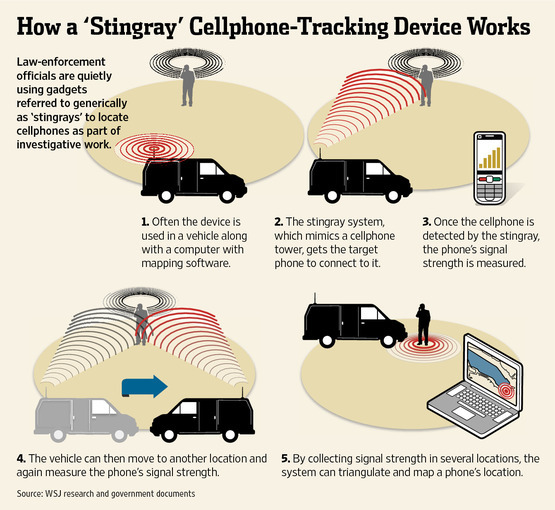The Stingray: the mobile phone tracker the Government is keeping under wraps

A criminal court case in Arizona has revealed the U.S. Government's ability to track mobile phones using a portable device called the Stingray. But the lengths that have been striven to in this case to conceal the technology have been publicly disparate compared to your average Government cover-up.
The defendant in the case, Daniel David Rigmaiden is facing fraud charges, and he's been pursuing the Government to provide information about the device that was used to locate him. This is when the case about the Stingray was pursued, and the U.S Department of Justice declared this a "search" under the Fourth ammendment (a fail-safe guard in the Bill of Rights against unreasonable searches and seizures), in a supposed attempt to cover it up.
When the judge asked for more information about the Stingray to determine the requirements of a search warrant, the Government filed a memo proposing both sides of the debate, saying that the mobile tracker doesn't generally require a warrant; but also conceding that one was required in the situation. A huge blow to the Governmental case, just to keep the tech specs, design and functionality of the Stingray a secret.
Although the general consensus has been that the Government lawyers have been willing to bend over backwards to cover this up, there is some information leaks pertaining to the workings of the device. Much like the technology that has been confirmed in use by London's Met Police, the Stingray imitates a cell tower, tricks your phone into connecting to it and triangulates your location and important phone information. It can fit in the back of a van and track the location to any type of mobile phone by measuring the distance to it from multiple locations. However, FBI contacts to the press are informing multiple tech press sites that such an act requires co-operation from the network providers, which could take weeks to get.
In the latest memo, the FBI has made the comment that all data collected from Stingrays (emphasis on the plural, scary) are deleted because the devices will probably pick up outside information from innocent people, as well as the suspects. This is to ensure "that the privacy rights of those innocent third parties are maintained." The defense indicated that it plans to file a response to the memo this week.
The Stingray eliminates the need for cell towers, meaning investigations become pretty much open-close cases. But it's also rather troubling that this kind of Government intelligence gathering equipment is not just apparent; but also (sort of) covered up in the U.S. and U.K. We'll keep tabs on the progression in this case, as to whether they keep the Stingray a secret, or publicly reveal the capability to track anyone without a warrant. The former would preferable, I guess.
Source: Wall Street Journal


